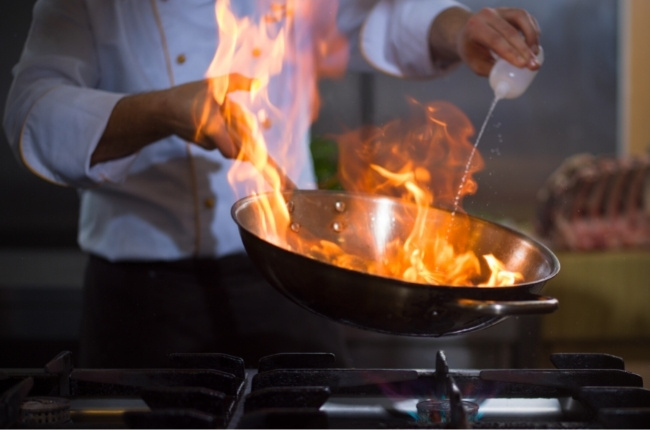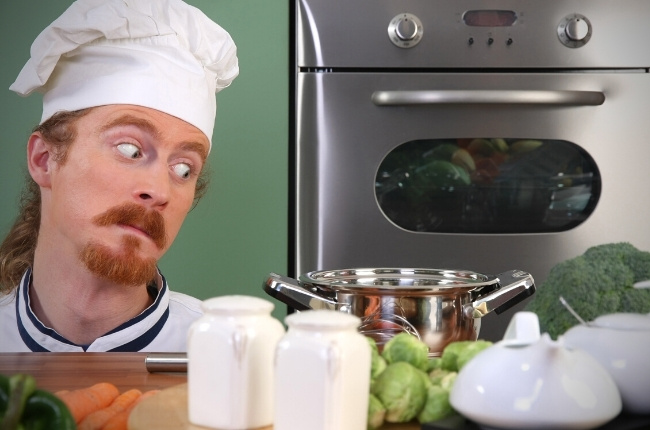Nowadays, it does seem like induction cooktops are a must-have in the kitchen. They are easier to operate and clean.
However, despite its marketed convenience, the Association of Home Appliance Manufacturers reported in 2019 that only a tiny percentage of US homes have it.
Do professionals feel the same way as most citizens regarding this topic? Do chefs prefer gas or induction cooktops? If it’s the latter, is it time to get one for your home too?
What cooks better: induction or gas?
Buying a cooktop shouldn’t be difficult. Most of the time, you head out to your appliance center, purchase the same stove you’ve had on for years and get out.
But now, you can choose an alternative from your familiar gas stove to the popular induction cooktop. So, what’s better?
Induction cooktops work using electromagnetism. The physics is relatively simple — your induction cooktop has a copper coil underneath the surface.
When electricity passes, it creates a magnetic field. This magnetic field eventually heats the cookware you have without flame. It’s like cutting the middleman!
The science behind it makes induction cooking precise and efficient. What’s more, it enables your pan or pot to heat up relatively faster than a gas stove. The smooth surface also makes for a quick clean-up.
In a study by Schott, a German multinational glass company, it took twice as much time to boil 0.75 liters of water on a gas cooktop than an induction one. Twice!
The heat controls and settings featured in induction gradually increase in levels and cool down relatively fast. On the other hand, a dial controls a gas cooktop. With this feature, you can only estimate how much the temperature varies.
The hot iron grates can still transfer heat even if you turn off the gas stove. When that happens, it’s easy to get something overcooked!
With induction, the energy you conserve is also greater. Faster heating equals faster cooking time. You also don’t have to worry about dealing with a fire hazard daily.
For homebodies, make sure to purchase an induction with a child lock. Your child will remain safe, and you won’t have to be in constant worry.
However, gas cooktops are the majority’s choice for a reason. They are easy to use (no learning curve at all) and won’t require you to get induction-compatible cookware. You can get every kind of cookware and still be able to use it with a gas stove.
Tip: A cookware is “induction-compatible” if you can stick a magnet to it.
Can you imagine splurging on a new cooktop just to realize you also have to buy a new set of expensive pots and pans? That’s quite nightmarish for your wallet.
Moreover, even if you accidentally place a pan too hard on a gas cooktop, it won’t leave a scratch or, worse, shatter like the glass surface of an induction.
Did you say the power is out? No worries, a gas cooktop can still function (use a match!) and give you a warm meal while waiting for the power to be back.
“Better” might be a subjective term.
However, these two types of cooktops both have pros and cons that you should consider. For a homebody, it might be an easier choice to make, but what about a chef?
Do chefs use induction cooktops?
Picture a chef in your head— don’t you instantly see someone doing pan gymnastics over a flame?

Wouldn’t it be weird to know that chefs would use any other type of cooktop aside from a gas stove? Well, not really.
Some chefs do prefer to ditch the gas and switch to induction instead. But why?
In an interview with the Guardian, chef James Ramsden, a co-presenter of the podcast The Kitchen is on Fire, proudly owns a big induction range in his new home and commented that he won’t ever go back to gas again.
In his Food for Thought Youtube video, Chef Andrew discussed the pluses a homebody might appreciate when using an induction hob. He emphasized that there’s no heat dispersion everywhere due to the physics of how cookware gets heated on an induction hob.
Think about your time on a gas stove. You can feel the heat emanating from the flame, and accidentally bringing your hand a bit closer to it makes you jolt in shock.
With induction, Chef Andrew showed that you could place a silicone mat on the hob itself, and it won’t become a fire hazard. If you are someone with limited kitchen space, this is a total space saver!
Another interesting point he made was the area dependence of gas stoves.
Here’s some science: Flame burns by supplying fuel (gas) and an oxidant (oxygen).
Living in an elevated area like Chef Andrew, you have less oxygen in the air. That means your flame wouldn’t have the same heating power as that from the sea-level location.
Induction doesn’t have that dilemma. It doesn’t require oxygen; therefore, the efficiency stays the same wherever you have it.
The temperature control is also one, if not the highlight, of an induction cooker. Chefs require precision in their work. Do you want to melt chocolate without scorching it?
That’s easier when you have an induction with an exact temperature setting. And even if you ramp up the temperature to its highest setting, you won’t have to worry about gas leaks and big flames.
The fast cooling pace of the hob makes it safer for you and, as Chef Andrew agrees, for the little ones too who might accompany you in the kitchen.
The speed and energy efficiency make it a top choice for the Australian chef, Neil Perry, as well. It’s easier to clean down, and you can increase or drop the temperature quickly.
Here are some quick tips you can rely on if you want to start using an induction cooktop in a commercial kitchen.
- Get everything ready before you cook. The cooking vessel heats up quickly, and it is better to get it all together so you don’t waste time.
- Get an induction hob that can support bulk cooking. It is better than using different burners for the same food.
- Keep your gravy, sauce, and soup warm using the simmer option. You won’t have to be involved with heating it repeatedly or any scorching.
A place without wasted heat and the capability to speed up cooking makes induction cooktops an ideal preference in the commercial kitchen. But why do some refuse to take the leap?
Why do restaurants not use induction?
When you lay down all the pros of induction cooktops, it’s confusing why a busy mid-service restaurant won’t consider switching entirely to it instead of sticking to gas. So, why do chefs not use induction?
One thing about induction cooktops is that they are relatively expensive to maintain. If you have a hob and one of the burners isn’t functioning anymore, some repairmen do not even attempt to fix it.
This is because the inner workings of an induction are complex. Or if you do take it for repair, it can cost a fortune.
Noise is another turn-off when it comes to induction. High-temperature settings cause loud vibrations on the cookware. It might not be very pleasant to deal with in a busy restaurant setting where you get orders every time.
Besides, you can’t roast or flame-grill on an induction. So a restaurant that focuses on that may feel discouraged about leaving gas cooktops altogether.
Moreover, the special pans and pots required may seem too much for a small restaurant. All the cookware needs to be sturdy, flat, and have ample iron content, or else the cookware wouldn’t heat up.
It is also not easy to get a professional installer for your restaurant.
For example, an installer must also get a conformal coated board when getting a commercial-use induction. This protects the electrical components from grease and moisture.
Additionally, you don’t want a cooktop with tempered glass but one made of ceramic so that it can sustain heat.
Maintenance is another thing you have to plan financially too. Clean-ups may be easier but require non-abrasive materials to avoid scratches.
All of them will add to a heftier price point when considered. As a restaurant, this will be an investment that needs careful planning.
Bottomline: Do professional chefs prefer gas or induction?
When Chef Tim Spedding of the famous P Franco restaurant in London described induction hobs as “clean, efficient and versatile,” he was not lying.
Flame, unlike induction, has variables that control its temperature. And while chefs have mastery over them, the overall flexibility of an induction hob opens for more menu options and faster service.
However, there remains no consensus or recent statistics that declares one to be better than the other.
What you can do now is try to switch gradually, make comparison notes, and decide a preference for your home or restaurant.

Leave a Reply